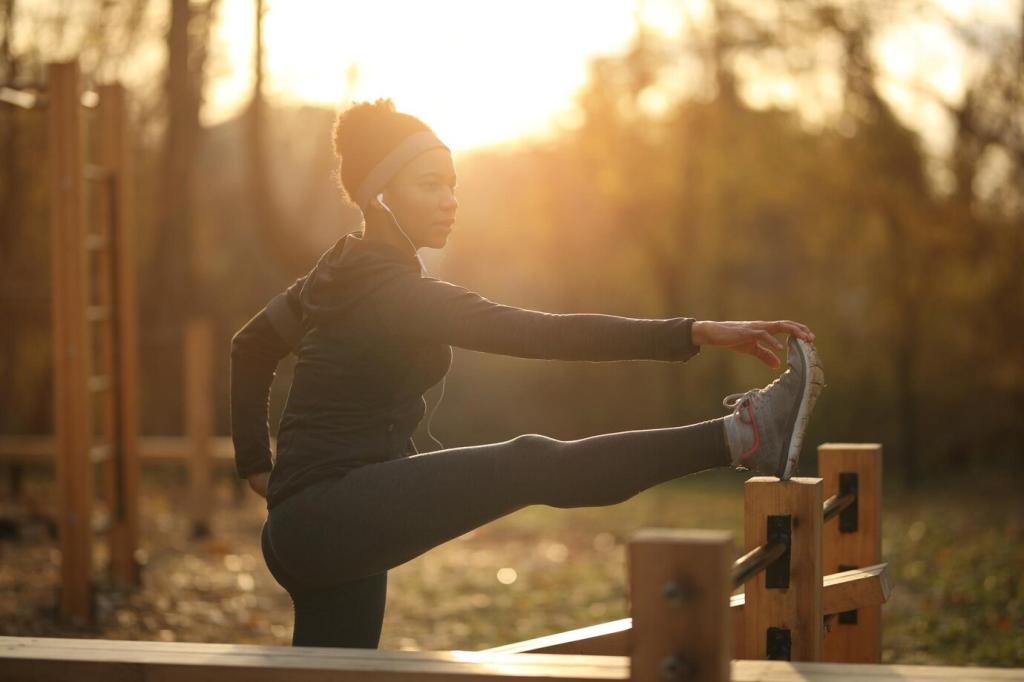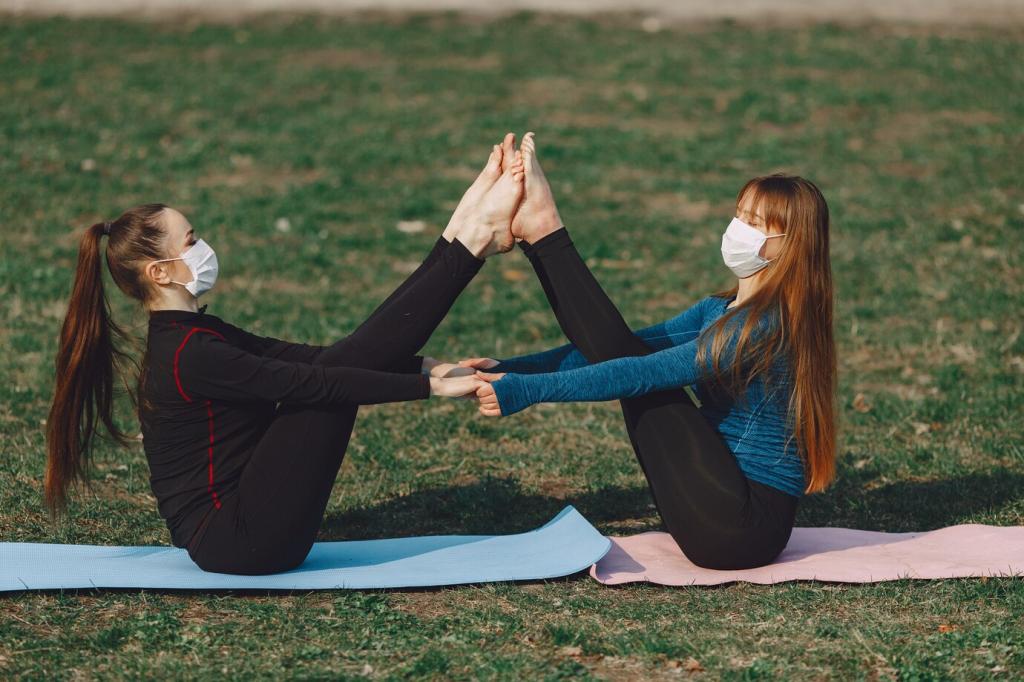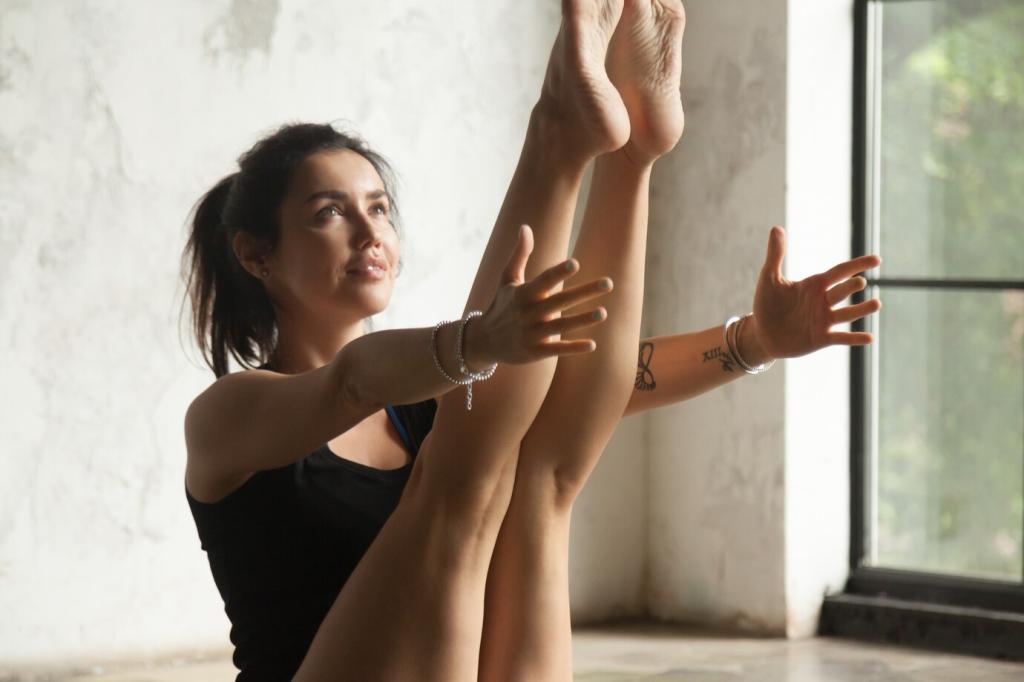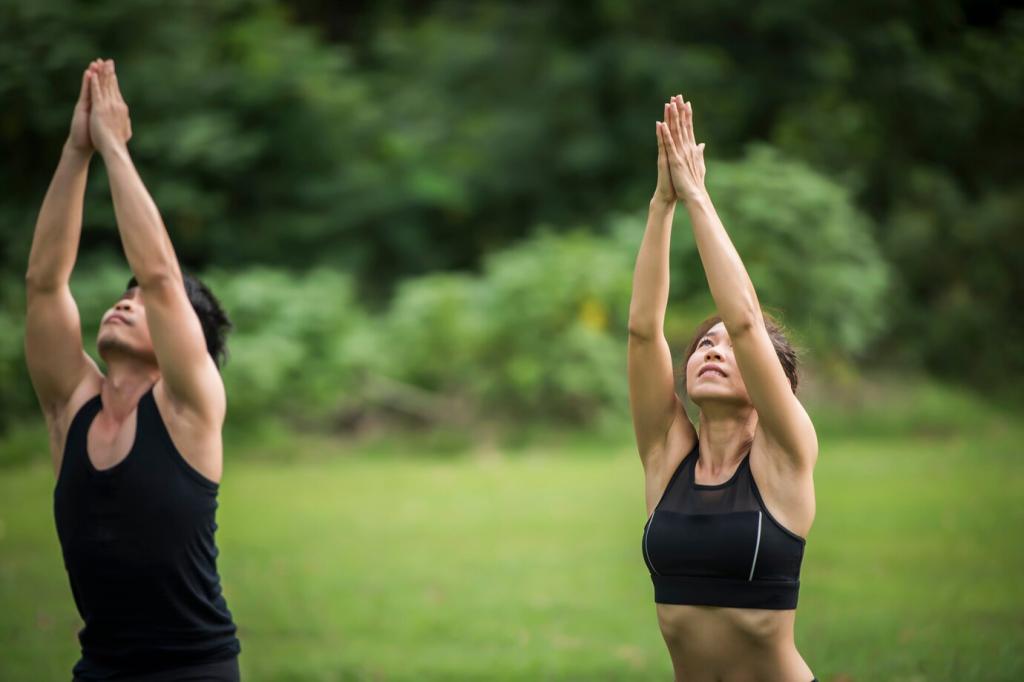Building Strength through Yoga: A Balanced Fitness Plan
Today’s chosen theme is Building Strength through Yoga: A Balanced Fitness Plan. Step onto your mat with intention as we blend alignment, breath, and smart progressions to develop resilient muscles, steadier balance, and calm confidence. Subscribe and share your goals so we can grow stronger together.


Why Strength-Building Belongs in Yoga
Every posture is a conversation with gravity. When you slow transitions and hold shapes, muscles engage, joints align, and tendons adapt. The magic lies in deliberate pacing, stable foundations, and breath-led control that transforms familiar flows into genuine strength practice.
Why Strength-Building Belongs in Yoga
Isometric holds like Chair, Warrior II, and Low Lunge challenge you to produce force without moving. Increasing time under tension safely recruits more motor units, refines technique, and teaches patience, making each second an investment in durable, functional strength.
A Balanced Weekly Yoga Strength Plan
Three Training Pillars: Push, Pull, Core
Build your week around pushing patterns (planks, chaturanga progressions), pulling patterns (dolphin, forearm dog, strap rows), and core stability (hollow body, boat). This balance develops symmetry, protects shoulders and spine, and supports graceful transitions on and off the mat.
Sample 7-Day Outline
Try this flow: Monday push-strength, Tuesday mobility, Wednesday pull-strength, Thursday breathwork and recovery, Friday compound flow, Saturday core and balance, Sunday restorative. Rotate intensities, track holds and reps, and note energy levels to keep progress steady yet kind.
Adaptation for Busy Schedules
When time is tight, use 20-minute micro-sessions. Stack isometrics, slow eccentrics, and two focused flows each week. Consistency beats marathon practices, so commit to short, clear intentions and celebrate every small step by sharing your wins with our community.
Key Poses and Mini-Sequences for Strength
01
Lower Body Power: Warrior Ladder
Flow Warrior I to Warrior II to Reverse Warrior, then settle into a 45–60 second Warrior II hold. Track knee alignment, foot triad, and hip action. Add controlled pulses and slow exits to build quads, glutes, and unwavering mental focus.
02
Upper Body and Core: The Plank Family
Cycle high plank, forearm plank, side plank, and slow chaturanga lowers. Emphasize protraction, rib control, and steady nasal breathing. Increase difficulty by elevating feet or adding knee drives, always honoring quality form before stacking more challenge.
03
Arm-Balance Foundations: Crow Prep
Start with malasana, wrist prep, and block-supported crow. Practice weight shifts, rounding through the upper back, and gentle toe taps. One reader, Maya, practiced five mindful shifts daily and surprised herself landing a five-second crow by week four.

Diaphragmatic Breathing Meets Bandhas
Inhale to expand laterally through ribs; exhale to gently engage pelvic floor and wrap the lower belly. This balanced bracing stabilizes the spine during planks, warriors, and arm balances, making strength feel organized, efficient, and surprisingly calm.

RPE for Yogis: Rate Your Effort
Use a simple 1–10 effort scale. Aim for 6–8 on strength days, 3–5 on mobility days, and 1–2 for restoration. This prevents burnout, aligns with recovery, and keeps motivation high without guessing or pushing past your body’s wise signals.

A Two-Breath Rule for Better Reps
Before every hard hold, take two slow breaths to set alignment and intention. Readers report fewer compensations and steadier focus. Try it this week and comment whether those two breaths changed your stability or confidence in challenging poses.
Recovery That Builds You Stronger
After strength sets, unwind with hip openers, thoracic rotations, and gentle hamstring flossing. Two to five minutes of breath-led mobility reduces stiffness, reinforces better ranges, and prepares tissues for the next session without lingering fatigue or soreness.


Recovery That Builds You Stronger
Prioritize consistent sleep and balanced meals with protein, colorful plants, and hydration. These fundamentals quietly amplify your yoga strength work, fueling better sessions and faster recovery while keeping your mood bright and your motivation steady throughout the week.
Measure What Matters
Strength Benchmarks Without a Barbell
Record longest plank hold, balanced Warrior III time, slowest controlled chaturanga descent, and unassisted crow attempts. Retest monthly. Celebrate technique wins like quieter shoulders or steadier breath—these are strength milestones as meaningful as extra seconds.
Consistency Metrics That Motivate
Mark sessions completed, minutes practiced, and perceived effort. Add a note about how your body felt. Patterns emerge quickly, helping you fine-tune volume, choose smarter progressions, and keep enthusiasm high with honest, encouraging feedback from your own practice.
Share Your Journey and Inspire Others
Post your weekly wins, questions, and breakthroughs in the comments. Ask for feedback on a pose, request a mini-sequence, or propose a challenge. Your story might be the spark that helps another reader discover steady strength through yoga this month.
Join our mailing list
